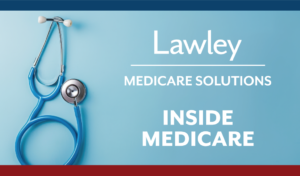Exchange Health Insurance Subsidies
Exchange Health Insurance Subsidies
May 22, 2013
The Affordable Care Act (ACA) calls for the creation of state-based competitive marketplaces, known as Affordable Health Insurance Exchanges (Exchanges), for individuals and small businesses to purchase private health insurance and qualify for premium tax credits and other affordability programs.
The ACA created health insurance subsidies, in the form of premium tax credits and cost-sharing reductions, to help eligible individuals and families purchase health insurance through an Exchange. By reducing a taxpayer’s out-of-pocket premium costs, the subsidies are designed to make coverage through an Exchange more affordable.
Subsidies will be available beginning in 2014, at the same time the Exchanges are scheduled to become operational. Enrollment in Exchanges is expected to begin Oct. 1, 2013.
OVERVIEW OF THE EXCHANGE HEALTH INSURANCE SUBSIDIES
There are two federal health insurance subsidies available with respect to coverage through an Exchange – premium tax credits and cost-sharing reductions. Both of these subsidies vary in amount based on the taxpayer’s household income and reduce the out-of-pocket costs of health insurance for the insured.
- Premium tax credits are available for people with somewhat higher incomes (up to 400% of FPL), and reduce out-of-pocket premium costs for the taxpayer.
- Reduced cost-sharing is available for individuals with lower incomes (up to 250% of FPL). Through cost-sharing reductions, these individuals will be eligible to enroll in plans with higher actuarial values and have the plan, on average, pay a greater share of covered benefits. This means that coverage for these individuals will have lower out-of-pocket costs at the point of service (for example, lower deductibles and copayments).
For purposes of determining eligibility for these subsidies, and the amount of any subsidy available, household income is determined using the taxpayer’s federal income tax return for that year. However, because these subsidies are provided when the individual purchases insurance, the Exchanges will generally have to determine household income well before the individual files his or her tax return for that year.
To aid the Exchanges in making these determinations, HHS released a draft application for insurance that asks applicants to provide specific information about their current income. If the applicant’s current income is not steady or if they expect it to change, the application asks them to project their 2014 income. If the applicant provides no financial information, the Exchange will rely on the individual’s federal income tax return from the previous year.
At the end of the year, the subsidy amount will be recalculated using the taxpayer’s household income as reported on his or her tax return, and any difference in the amounts will be reconciled. If the taxpayer’s income has increased from the amount that he or she reported to the Exchange, and as a result received a larger subsidy than he or she was entitled to, that individual may have to repay part of their subsidy. This could result in a smaller tax refund or a tax payment due for that individual.
ELIGIBILITY FOR PREMIUM TAX CREDITS
ACA requires Exchanges to provide information to prospective enrollees about their eligibility for premium tax credits. To be eligible for the premium tax credit, a taxpayer:
- Must have household income for the year between 100 percent and 400 percent of the federal poverty line (FPL) for the taxpayer’s family size;
- May not be claimed as a tax dependent of another taxpayer; and
- Must file a joint return, if married.
In addition, to receive the premium assistance, a taxpayer must enroll in one or more qualified health plans (QHPs) through an Exchange. The taxpayer cannot be eligible for minimum essential coverage (such as coverage under a government-sponsored program or an eligible employer-sponsored plan).
Employees who may enroll in an employer-sponsored plan, and individuals who may enroll in the plan because of a relationship with an employee, are generally considered eligible for minimum essential coverage if the plan is affordable and provides minimum value and are not eligible for the premium tax credit.
-Affordability Determination
To determine an individual’s eligibility for a tax credit, ACA provides that employer-sponsored coverage is not considered affordable if the employee’s cost for self-only coverage exceeds 9.5 percent of the employee’s household income for the tax year.
On Jan. 30, 2013, the IRS released final regulations to confirm that an employer-sponsored plan is affordable for family members if the portion of the annual premium the employee must pay for self-only coverage does not exceed 9.5 percent of the taxpayer’s household income. Thus, the affordability determination for families is based on the cost of self-only coverage, not family coverage.
AMOUNT OF THE PREMIUM TAX CREDITS
The amount of the premium tax credit that an individual can receive generally is the difference between the cost of the premium for the “benchmark plan” and the amount the individual should be able to pay for premiums (expected contribution).
- The “benchmark plan” is the second lowest cost silver plan in the Exchange and area where the individual is eligible to purchase coverage. A silver plan is a plan that provides the essential benefits and has an actuarial value of 70 percent (that is, the plan, on average, pays 70 percent of the cost of covered benefits).
- The “expected contribution” is calculated as a specified percentage of the taxpayer’s household income for the year, based on the taxpayer’s FPL. The percentage increases as income increases, as follows:
ACA also established new eligibility rules for Medicaid, giving states the option of extending Medicaid coverage to most people with incomes under 138 percent of federal poverty. In the Exchanges in states that expand Medicaid, tax credits are available for individuals with incomes between 139 percent and 400 percent of federal poverty who do not have access to employer-sponsored or public coverage. People with incomes between 139 percent and 250 percent of poverty will also be eligible for reduced cost‐sharing in Exchange plans, as follows:
If an individual enrolls in a QHP that is cheaper than the benchmark plan, the actual amount the individual will pay for coverage will be less than the expected contribution. However, an individual that wants to purchase a QHP that is more expensive would have to pay the full difference between the cost of the benchmark plan and the plan they wish to purchase. The credit is capped at the premium for the plan the individual chooses (so that no one receives a credit that is larger than the amount they actually pay for their plan).
PREMIUM TAX CREDIT PAYMENTS
The premium tax credits are both refundable and advanceable. A refundable tax credit is one that is available to an individual even if he or she has no tax liability. An advanceable tax credit allows an individual to receive assistance at the time that they purchase insurance, rather than paying their premium out of pocket and waiting to be reimbursed when filing their annual income tax return.
Advance payments would be made directly to the insurance company on the family’s behalf. At the end of the year, the advance payments are reconciled against the amount of the family’s actual premium tax credit, as calculated on the family’s federal income tax return. Any repayment due from the taxpayer is subject to a cap for taxpayers with incomes under 400 percent of FPL.
COST-SHARING REDUCTIONS
In addition, individuals with household incomes of up to 250 percent of FPL may also be eligible for reduced cost-sharing (that is, coverage with lower deductibles and copayments). These cost-sharing reductions are intended to protect lower income individuals from high out-of-pocket costs by ensuring that the plan, on average, pays a greater share of covered benefits. In order to receive the reductions, an individual must enroll through an Exchange in a QHP in the silver level of coverage.
USE THIS LINK TO DOWNLOAD A PDF OF THIS BRIEF:
Exchange Health Insurance Subsidies
This Legislative Brief is not intended to be exhaustive nor should any discussion or opinions be construed as legal advice. Readers should contact legal counsel for legal advice.








